I’ve mentioned the DP28 and DPM light machine guns a couple times, and it occurs to me that the differences between them are worth going over. There are parts kits for both variants available, so a prospective builder ought to know what changed and why.
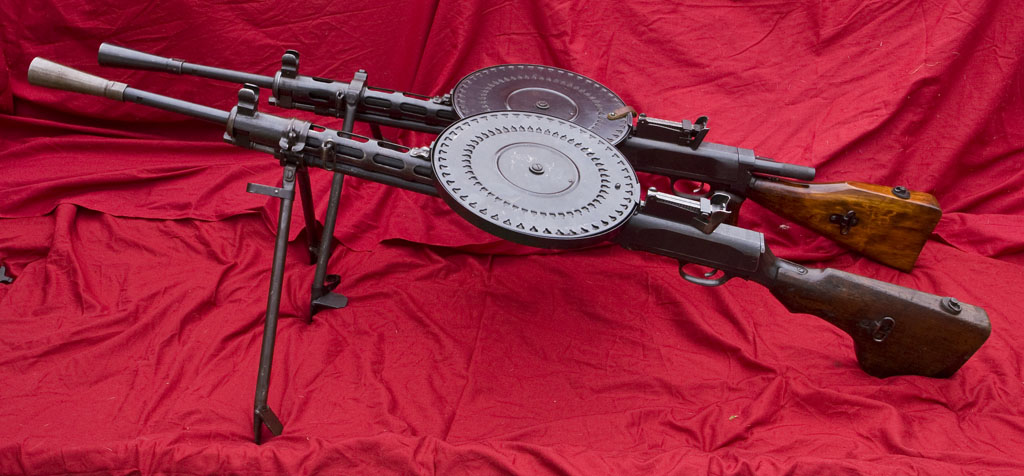 The DP28 was one of the early generation of light machine guns, designed between the World Wars before everyone had figured out which features worked and which didn’t. During WWII, the Russians adopted a modernized version of the gun as the DPM in an effort to improve some of the more readily fixable issues.
The DP28 was one of the early generation of light machine guns, designed between the World Wars before everyone had figured out which features worked and which didn’t. During WWII, the Russians adopted a modernized version of the gun as the DPM in an effort to improve some of the more readily fixable issues.
The most obvious difference between the two guns is the stock. The original DP28 used a traditional straight rifle stock with a bulge for the non-shooting hand to hold. The DPM changed that to a much more comfortable and controllable pistol grip. In the process, the grip safety was dropped and replaced with a safe/fire selector lever above the trigger. For someone contemplating a semiauto reproduction, these are the most significant differences between the designs.
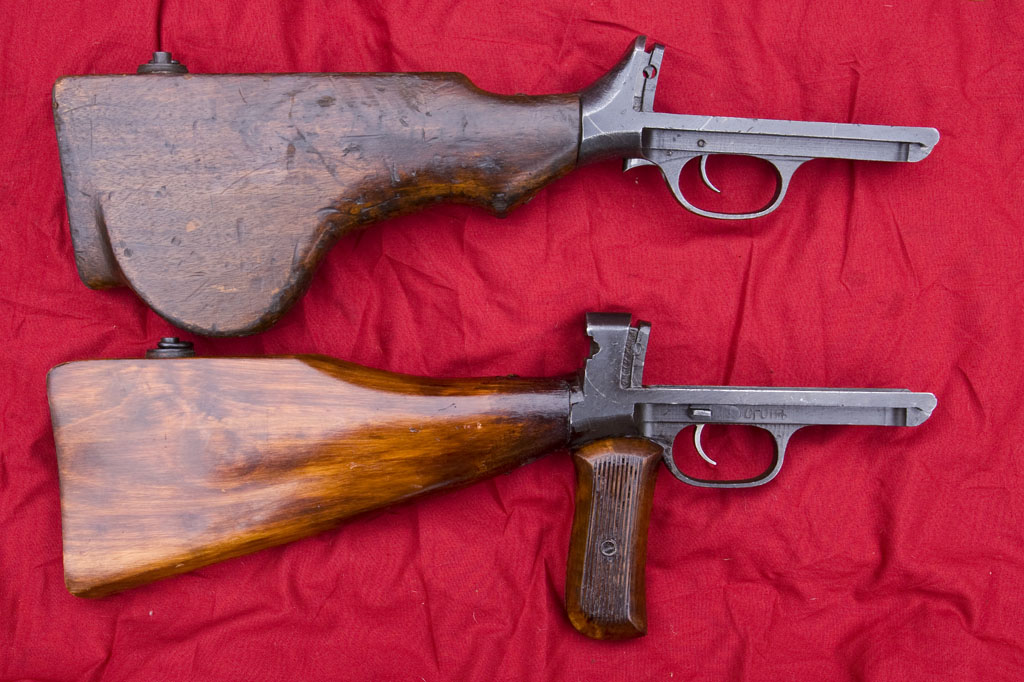 For guns in combat use, though, the change to the recoil spring was much more important. The original DP28 used a recoil spring sleeved around the gas piston, under the barrel and in front of the action. It was discovered that under continuous fire the heat from the barrel was intense enough to damage the temper of the spring and cause malfunctions (the same thing happened to the Lewis gun for the same reason). So with the modernization, the spring was moved to a more typical position behind the bolt. There was no space in the receiver to accommodate a spring back there, so a tube was added to house it. Incidentally, this change also forced the change of the the takedown pin – the DP28 uses one the runs through both sides of the receiver but this would interfere with the recoil spring in the DPM, so it uses a shorter pin that only threads into the near side of the receiver.
For guns in combat use, though, the change to the recoil spring was much more important. The original DP28 used a recoil spring sleeved around the gas piston, under the barrel and in front of the action. It was discovered that under continuous fire the heat from the barrel was intense enough to damage the temper of the spring and cause malfunctions (the same thing happened to the Lewis gun for the same reason). So with the modernization, the spring was moved to a more typical position behind the bolt. There was no space in the receiver to accommodate a spring back there, so a tube was added to house it. Incidentally, this change also forced the change of the the takedown pin – the DP28 uses one the runs through both sides of the receiver but this would interfere with the recoil spring in the DPM, so it uses a shorter pin that only threads into the near side of the receiver.
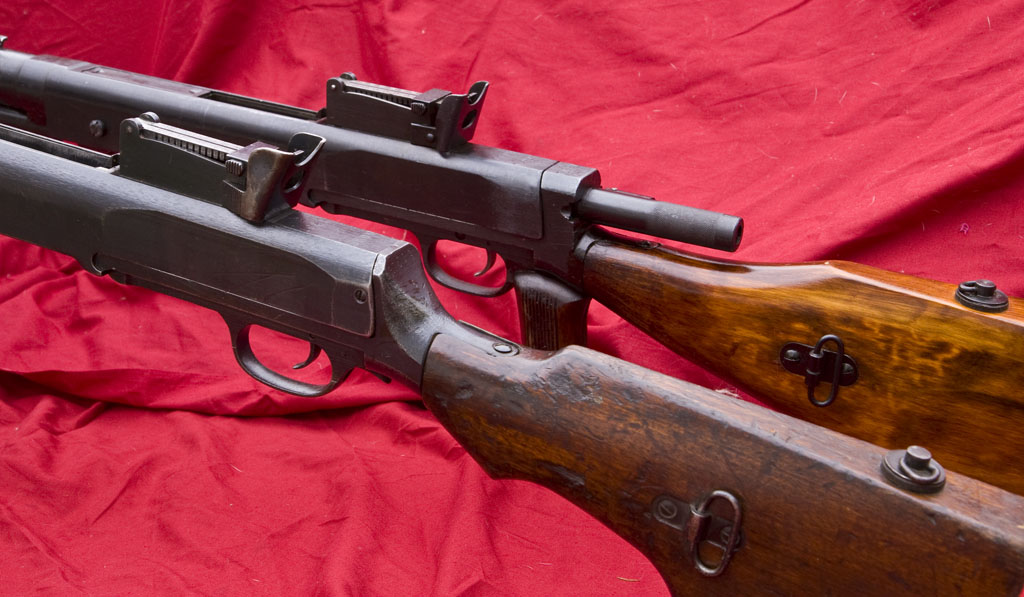 In addition to the spring housing tube, a guide for the rear recoil spring was also necessary, to prevent it from kinking and binding. So while the bolt and locking flaps were left unchanged between the two designs, the DPM added a long tail to the firing pin to act as a spring guide.For what it’s worth, I have no idea what the three holes in the DPM bolt carrier are for, but they show up on every DPM kit I’ve seen.
In addition to the spring housing tube, a guide for the rear recoil spring was also necessary, to prevent it from kinking and binding. So while the bolt and locking flaps were left unchanged between the two designs, the DPM added a long tail to the firing pin to act as a spring guide.For what it’s worth, I have no idea what the three holes in the DPM bolt carrier are for, but they show up on every DPM kit I’ve seen.
It’s worth noting that the receivers for the two designs are basically identical, and a DPM receiver can be assembled with a DPM pistol-grip lower and DP28 internals, including the forward mounted recoil spring and still function just fine (unless you’re shooting so much that you get the barrel glowing). This is a convenient fact for semiauto builders, as the lack of a recoil spring in the back opens up a lot of options for a semiauto fire control group.
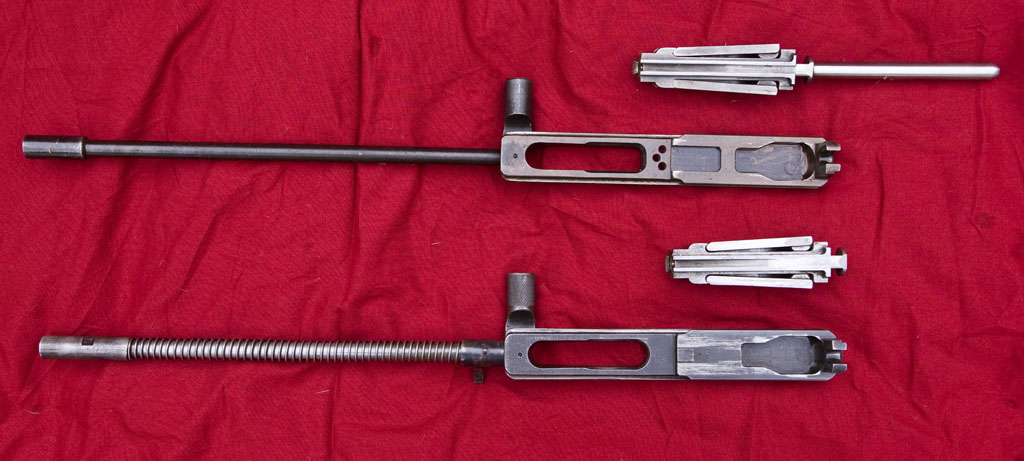 The final change was to the bipods. The DP28 bipod was just clamped over the barrel shroud with a thumb screw, and was deemed too weak in combat. So with the overhaul, the DPM bipod was changed to a unit that used a bracket inside the shroud solidly bolted to an outside piece to hold the legs on much more securely. In additions to being more solid, the result was also attached at the top of the shroud, giving the DPM a slightly lower profile.
The final change was to the bipods. The DP28 bipod was just clamped over the barrel shroud with a thumb screw, and was deemed too weak in combat. So with the overhaul, the DPM bipod was changed to a unit that used a bracket inside the shroud solidly bolted to an outside piece to hold the legs on much more securely. In additions to being more solid, the result was also attached at the top of the shroud, giving the DPM a slightly lower profile.
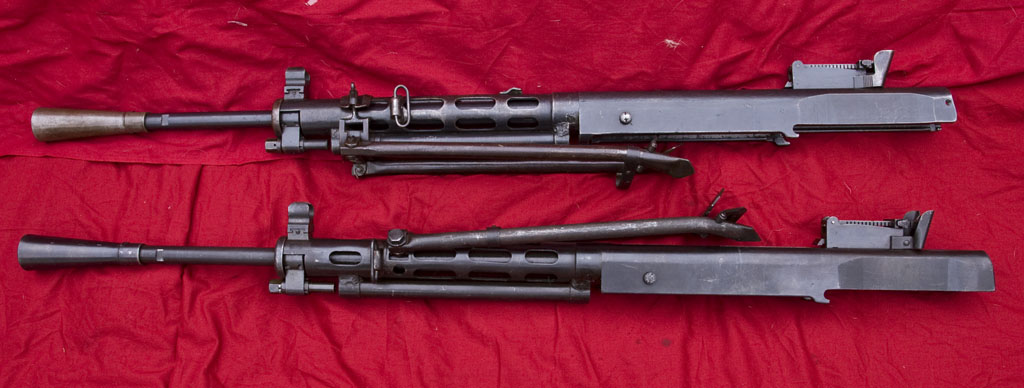 There were other variants of the DP light machine gun, including vehicle-mounted, aerial, and belt-fed types, but those will have to wait for another day. The two we’ve looked at here are the ones commonly available today as parts kits, and thus account for the vast majority of what most folks will encounter.
There were other variants of the DP light machine gun, including vehicle-mounted, aerial, and belt-fed types, but those will have to wait for another day. The two we’ve looked at here are the ones commonly available today as parts kits, and thus account for the vast majority of what most folks will encounter.
Pictures courtesy of GunPics.net

I assume the barrels interchange?
Yes, they do.
I know the DPM was manufactured by Poland as well as Russia, was the DP-28 manufactured solely by Russia or other countries as well?
Did the USSR army use a lot of these machine guns
The DP-28 was the standard issue LMG of WW2 up until the DPM, then it was replaced by the RP and RPD. SO basically, yes they did.
Not sure what you mean about the lewis gun springs being weakened by the heat from the barrel? The lewis uses a flat wound spring in a separate case under the receiver in front of the trigger guard. It is not subjected to the heat from the gastube, barrel or anything else. It was indeed a crappy design but at the time it was a compact setup and worked well.
As for the DPM/DP parts interchanging it should be noted that the lowers and uppers may require some slight modification and fitting to work with each other. A DP may require threading on the right side of the receiver for the DPM receiver lock screw. The barrel jackets are different due to the bipod mounting so a DPM bipod cannot simply be installed on the DP jacket. The threads on the receiver are the “same” however so the jackets can be swapped. As with all these guns made in various countries the threads may or may not interchange. The russians seem to have their own variations on metric threads though the poles seem to have a pretty standard thread.
Timmie
Hey Ian, I didn’t see you mention it here (nor have I seen it mentioned any where else for that matter) namely the hole in the bottom of the buttstock, do you by any chance know what was it for? Me and my friend have been looking for the information for a long time including the orgiginal russian manual yet couldn’t find anything. I’d be very happy if you could shed some light on the matter.
Hi. I’m buying a DPM (it’s marked as a DP26. Is this correct? At the store http://www.waffen.lu in luxembourg) its a great price.
Anyway, this is a full auto MG. I was wondering if there is a semiauto switch on this gun so I can shoot this in semi auto mode.
Also, Is there a way to convert it to only semiauto? What would I have to do for a full conversion to semi auto?
Thank you.
Is anyone still doing DPM builds? I have a kit I’ve been sitting on for a while and was wondering if anybody is still working with them?
SMG Guns is doing semi auto DPM builds.
Where is the information on what is required to make a DPM legal (semi-auto) when you build it from an imported parts kit?
I know this is a old thread but I have a question as I’ve just acquired a postie DP27, Westerners call it a DP28 even though no such animal was in the Russian arsenal.
Could somone with some knowledge on the two PLEASE contact me?
The Russian (and I assume other countries) DP-28s have a hole in the bottom of the rounded section of the stock. It seems like a rear elevation leg would fit here however I have never seen these in pictures. Do you know what this hole is for?
Is anyone still doing DP/DPM-28 semi-auto builds are selling semi-receivers and or barrels?